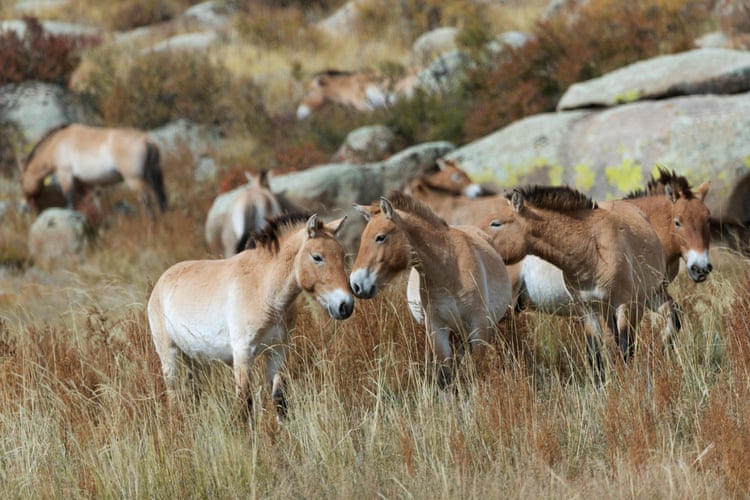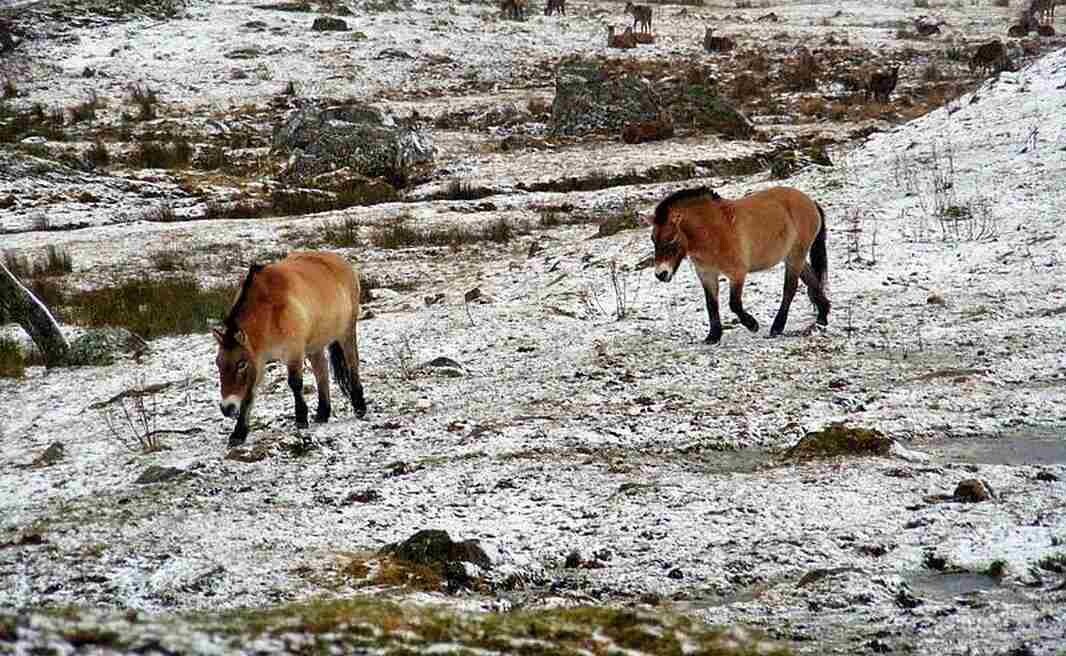Taming wild horses has traditionally involved methods that could be stressful for the animals. Today, there is a shift towards more humane, understanding, and non-forceful techniques that promote trust and cooperation between horses and humans.
Understanding Wild Horse Behavior
To effectively tame a wild horse, it is crucial to start with a deep understanding of their behavior and natural instincts. Wild horses are prey animals, which means they are highly sensitive to their surroundings and potential threats. This sensitivity can be seen in their strong flight response. Understanding these instincts is the first step toward earning their trust without force.
Trust-Building Techniques: Gradual Acclimatization to Human Presence
Building trust is a gradual process that begins with simply spending time in the horse’s environment. Initially, this involves sitting or standing at a distance where the horse feels secure, gradually decreasing this distance as the horse becomes more accustomed to the human presence. This method respects the horse’s comfort zone and reduces stress.
Non-Forceful Handling: Using Positive Reinforcement
Positive reinforcement involves rewarding the horse for desired behavior, which can include treats, gentle stroking, or soothing verbal praise. This approach encourages the horse to associate humans with positive experiences, thereby fostering trust and cooperation.
Body Language Communication: Understanding and Mimicking Equine Postures
Horses communicate extensively through body language. By learning and mimicking equine postures, humans can communicate intentions non-verbally to horses. For example, a relaxed posture and slow movements can convey safety and calm to a horse, helping to build a rapport.
Safe Enclosure Setup: Designing a Stress-Free Environment
Creating a safe and welcoming enclosure for the horse is essential. This space should be free from loud noises and sudden movements. Features like soft footing, adequate space for movement, and shelter from extreme weather are important for the horse’s comfort.
Incremental Desensitization: Exposure to Human Touch
Desensitization involves gently exposing the horse to human touch, starting with less sensitive areas like the shoulders or back and gradually moving to more sensitive areas as the horse becomes comfortable. This should be done in short, positive sessions to prevent overwhelming the horse.
Consistency in Training: Regular, Predictable Sessions
Consistency is key in taming wild horses. Regular, predictable training sessions help the horse to understand what is expected of them and when. This routine builds a sense of security and trust between the horse and the handler.
Monitoring Stress Levels: Observing Signs of Discomfort
It’s vital to continuously monitor the horse’s stress levels during training sessions. Signs of discomfort might include pacing, snorting, or avoidance. Recognizing these signs early and adjusting the approach accordingly is essential for a force-free taming process.
Role of Patience in Taming: Importance of Giving Time
Patience plays a critical role in taming wild horses. Each horse is unique and may adapt at its own pace. Rushing the process can lead to setbacks, so it’s important to allow the horse the time it needs to adjust to new experiences and environments.
Unique Training Environments
Northfield Park offers a unique vantage point to see wild, tamed horses competing in a bustling environment. For those keen on understanding every facet of horse training, BetMGM Ohio provides opportunities to see wild, tamed horses in a competitive environment.
Community Support: Learning From Experienced Handlers
Engaging with a community of experienced horse handlers and trainers can provide invaluable support and insight. These communities often offer workshops, training sessions, and one-on-one advice that can enhance the effectiveness of non-forceful taming techniques.
Ethical Considerations: Ensuring Humane Treatment
Finally, it’s crucial to consider the ethical aspects of taming wild horses. The methods chosen should always prioritize the physical and psychological well-being of the horse, avoiding any techniques that could cause fear, pain, or distress.
Each of these strategies highlights a step in the journey toward effectively and ethically taming a wild horse without the use of force, focusing on understanding, patience, and respect for the animal’s natural instincts and needs. By adopting these methods, handlers can develop a trusting and cooperative relationship with their horse, leading to a more fulfilling and humane interaction for both.
Lead Image: Mouse, a yearling from the Divide Basin in Wyoming, performs in the freestyle event at the Meeker Mustang Makeover on Saturday, Aug. 27, at the Rio Blanco Fairgrounds. The wild horse was trained by Jason Heid, 16, from Clark. (Hugh Carey, The Colorado Sun).







Leave a Reply